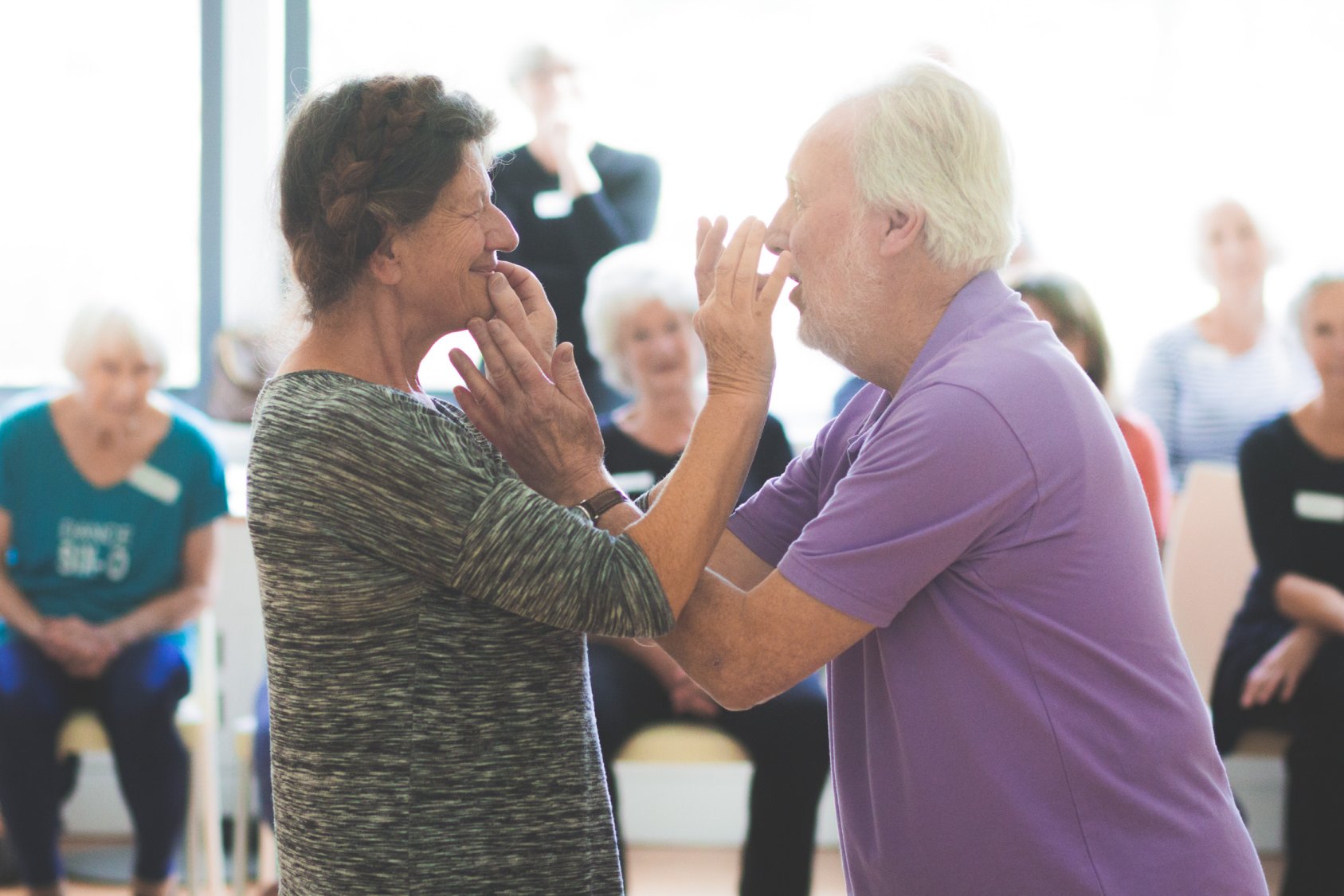
A skills-sharing workshop at LIFETIME 2016
Photo: Matt Bartram
A new dawn of dance
What’s behind the current rise in interest in dance for older people? Hannah Osmond has been finding out.
Across the UK, enthusiastic, determined, focused individuals are fighting hard for a new kind of dance provision – one that doesn’t simply enable access for older dancers, but aims to challenge, reinterpret and promote the ageing body.
Most participants, many of whom are retired and with little or no prior experience, are busy training hard to present a new area of dance specialism to us. They’re not content with the ‘aaahh’ factor. They want quality and to be pushed hard.
Whether this is about art or health, or both, who really knows. More poignantly, does it even matter?
Seasoned choreographers, such as Lea Anderson, Ben Duke and Charlotte Spencer, are making new commissions for older dance companies – and the work is getting seen. Theatres are programming whole evenings of dance for and by older people. The pioneering Elixir Festival at Sadler’s Wells regularly sells out and everywhere people are striving hard to achieve more. Not in spite of their age, but in celebration of it.
The older dance phenomenon
Older dance is not a new idea. Sadler’s Wells developed a resident, non-professional, performance company for the over 60s back in 1989, and Green Candle in London has featured work with older dancers as part of its core programme for a quarter of a century. However, the rise in interest and number of regular participants has sky-rocketed in recent years.
So how has this come about and what does the future hold for this relatively recent phenomenon? Parallels can perhaps be drawn with the dramatic rise in youth dance in the late 1980s and early 1990s, which has resulted in the development of specialist support agencies, such as Youth Dance England, now part of One Dance UK.
The number of older people regularly taking part in dance activities is difficult to estimate, yet looking at specific events can serve as an indication of trends that are playing out across the UK.
Pushing buttons
LIFETIME took over The Point in Eastleigh in October last year with a vision to bring older dancers centre stage. Conceived and managed by Clearcut and funded by Arts Council England, this performance platform and seminar event was programmed with all the strategic thinking and careful consideration of a continuing professional development opportunity for experienced artists.
Over one day four companies from across the south east of England performed, including Three Score Dance from Brighton and Dance SIX-0 from Salisbury.
This wasn’t a wishy-washy, self-appreciating community dance activity, played out to an audience of adoring friends and family. It pushed buttons. It encouraged challenging conversation and asked questions. And ultimately it aimed not only to acknowledge and celebrate the growth of dance for older people, but also to steer companies to look hard at themselves and at issues of sustainability, standards and best practice.
Seemingly, the biggest challenge relates to audience development – convincing programmers of the artistic integrity and potential of non-professional, ageing bodies.
The bar continues to be raised with companies like Dance SIX-0, Company of Elders (London), and Three Score Dance attracting some of the UK’s brightest choreographic talents. With theatres and festivals, such as Sadler’s Wells and Brighton Festival, already programming these companies, this is a promising start in promoting this new genre of work. Yet much advocacy work remains to be done and companies can’t afford to get complacent.
Does age matter?
Whether this is about art or health, or both, who really knows. More poignantly, does it even matter? The fact is older people are enthused, energised and engaged. They bring enquiring minds and life experience with them, and have much to say, artistically and otherwise.
Gus Watcham, member of Three Score Dance, says: “I never dreamt that reaching the age I am, I would have found such freedom of expression, challenge, support, hard work, euphoria and the sheer joy that movement in dance could bring.”
Age has become elastic, and we’re not sure what ‘older’ means anymore. What we do know is we’re all living longer. The number of centenarians in the UK has risen by 65% over the last decade to 14,570 in 2015 (Office for National Statistics).
Fortunately, a new dawn is rising and the path is being paved for many more of us to continue dancing into our twilight years. Frankly, I can’t wait!
Hannah Osmond is a freelance manager and producer.
www.hannahosmond.co.uk

Join the Discussion
You must be logged in to post a comment.